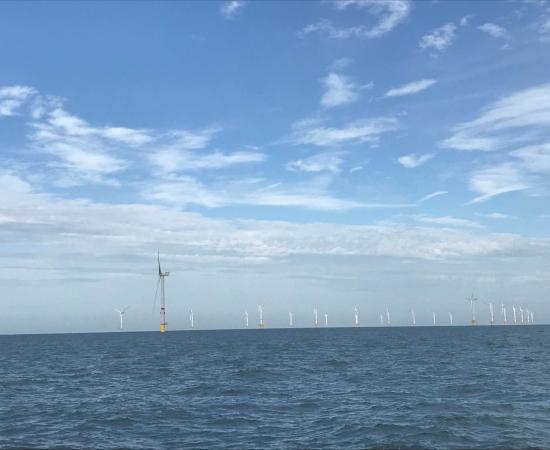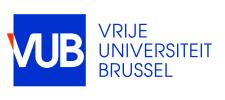
CLOUD4WAKE | Data enhanced simulation of wakes for all wind turbines in the North Sea nudged by SCADA data deployed on cloud
In the wake of a wind turbine, turbulence is created and the wind loses power significantly. This is called the wake effect. Cloud4wake wants to better investigate wake effects in wind farms so that adverse effects can be addressed and the business case of the farms improves.
Context
Farm design studies, governmental scenario analysis, grid stability investigations, hydrogen-wind energy island design, and wind farm operations optimization studies require accurate wake models scalable to entire concession zones. By continuously processing monitoring data they allow for parametric studies (scenario analysis) or digital twin models. This project aims to enable such studies by developing scalable wake models enriched with field data. Today many data are collected in Belgian North Sea that deliver crucial insights for our developers and technology providers in the domain of wakes of large wind farms.
Current analytical models typically have important model parameters (hyperparameters) that need to be set based on engineering experience. The outcomes of these models are largely dependent on these parameters. Methods for objectively defining model hyperparameters based on large experimental datasets lack, as well as methods for dealing with continuously changing inflow conditions to use models beyond stable wind farm operating points. Moreover, effects of veer and shear are only limitedly captured, whereas these are crucial for bring wake models to a load prediction context for control and turbine lifetime purposes.
Objective and results
CLOUD4WAKE targets an integrated set of fast simulation models for wind farm internal and external wakes for large densely filled concession zones. We aim to maximally improve model accuracy by exploiting field data to objectively set model hyperparameters for specific inflow conditions in North Sea context, as well as using AI layers to merge physical models with different hyperparameter settings to adapt to continuously changing inflow conditions. To ensure high quality model validation this project will perform long-term scanning lidar measurements at multiple offshore wind farms to experimentally capture wake profiles.
The main actionable outcomes of the project will be:
- A novel wake modelling method to model an entire offshore zone consisting of multiple wind farms. This allows to accurately assess the wake losses for use in resource assessment or operational studies. The former is crucial for the tenders, the latter for farm use optimization. In addition, wake models are actionable for scenario analysis: For example, grid operators to design and validate grid codes as well as investigations on wind hydrogen combinations. Finally, more loads-oriented wake engineering models are created. Such models can help in the design of novel farm controller strategies by providing a framework of virtual data to train and validate learning-based controllers.
- A cloud-based framework for calibrating these novel wake models with large sets of field data and perform scenario analysis as well running models as digital twin. This ensures that players with existing data can use these data to get deeper insights in their true wake losses in existing farms and leverage this knowledge to new wind farms. The ability to create a true digital twin will allow to detect and quantify changes in the wake behavior as basis for taking appropriate actions.
The project leverages the expertise and previous developments as head-start. KULeuven has a new wake merging model that allows combination with varying background flow and data-assimilation of wakes in an operational context. VUB builds on AI-models trained on 1-second SCADA data. VKI is expert in open-source weather model (WRF) with fast wake models allows for assimilation with SCADA data. Sirris quantifies the LCOE impact in the industry. The cSBO creates an integrated modeling framework that is cloud native and can interface easily with monitoring data.
Target group
Farm owners and developers, providers of design support service, farm construction support and monitoring services and wind turbine OEM. The research partners are supported and guided by an industrial advisory board.
Funding
• VLAIO SBO project within “De Blauwe Cluster”




